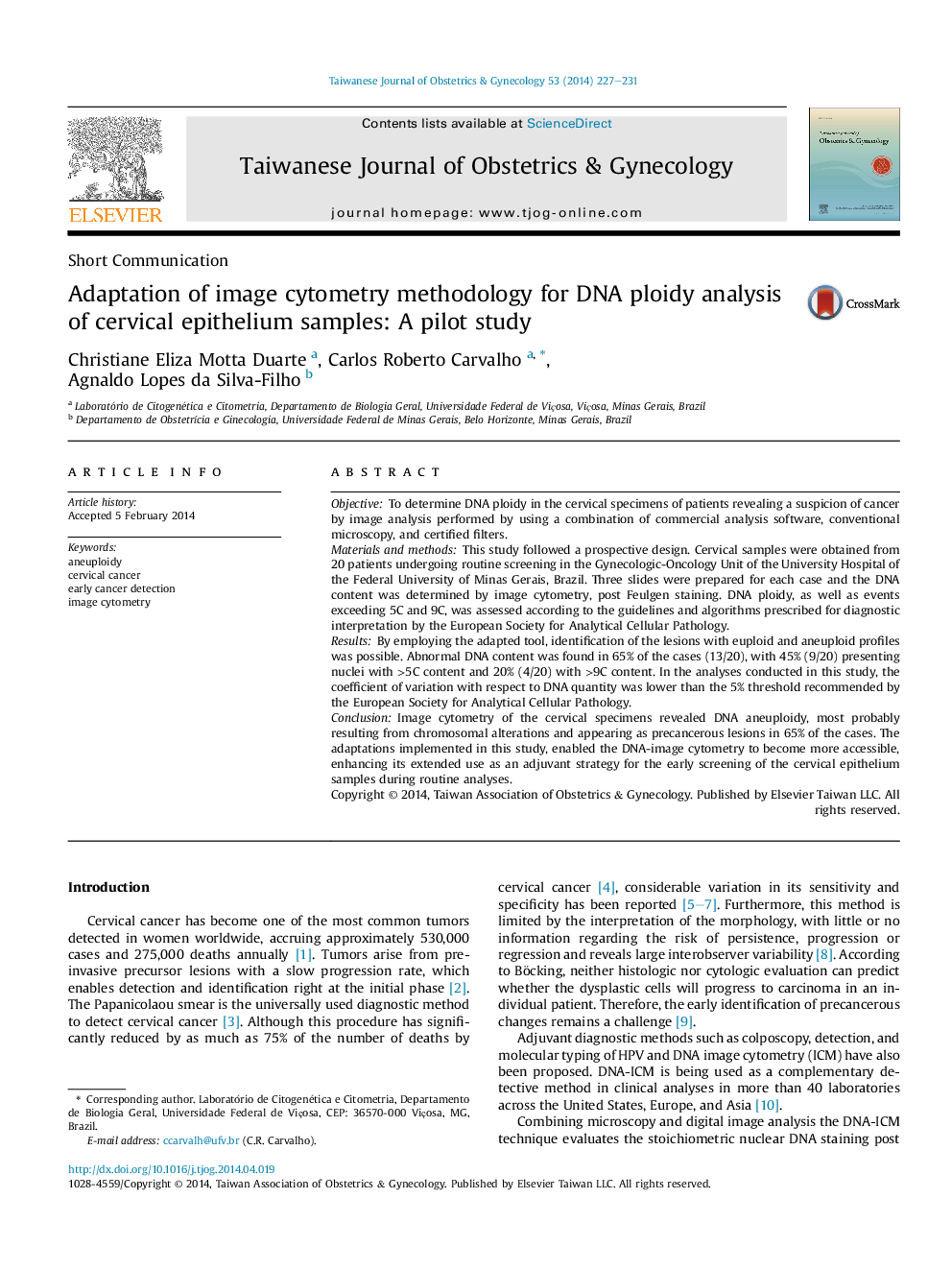| Article ID | Journal | Published Year | Pages | File Type |
|---|---|---|---|---|
| 3975132 | Taiwanese Journal of Obstetrics and Gynecology | 2014 | 5 Pages |
ObjectiveTo determine DNA ploidy in the cervical specimens of patients revealing a suspicion of cancer by image analysis performed by using a combination of commercial analysis software, conventional microscopy, and certified filters.Materials and methodsThis study followed a prospective design. Cervical samples were obtained from 20 patients undergoing routine screening in the Gynecologic-Oncology Unit of the University Hospital of the Federal University of Minas Gerais, Brazil. Three slides were prepared for each case and the DNA content was determined by image cytometry, post Feulgen staining. DNA ploidy, as well as events exceeding 5C and 9C, was assessed according to the guidelines and algorithms prescribed for diagnostic interpretation by the European Society for Analytical Cellular Pathology.ResultsBy employing the adapted tool, identification of the lesions with euploid and aneuploid profiles was possible. Abnormal DNA content was found in 65% of the cases (13/20), with 45% (9/20) presenting nuclei with >5C content and 20% (4/20) with >9C content. In the analyses conducted in this study, the coefficient of variation with respect to DNA quantity was lower than the 5% threshold recommended by the European Society for Analytical Cellular Pathology.ConclusionImage cytometry of the cervical specimens revealed DNA aneuploidy, most probably resulting from chromosomal alterations and appearing as precancerous lesions in 65% of the cases. The adaptations implemented in this study, enabled the DNA-image cytometry to become more accessible, enhancing its extended use as an adjuvant strategy for the early screening of the cervical epithelium samples during routine analyses.
